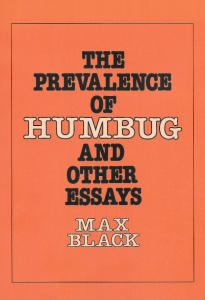The one sentence summary
Humbug is on the rise and this is what you can do about it.
Can’t be bothered to read it? Too much screen time lately? Listen to the 5-minute podcast.
WHAT THE BOOK SAYS 
- This is the main essay in a collection of 8 entitled The Prevalence of Humbug and other essays, published in 1983. The others cover topics such as rationality, reasonableness and objectivity.
- The author’s definition of first-degree humbug is: deceptive misrepresentation, short of lying, especially by pretentious word or deed, of somebody’s own thoughts, feelings, or attitudes.
- Second-degree humbug is when the speaker is self-deluded. If that’s the case, then their thoughts could be revealed by candid and radical self-examination.
- Humbug need not entail lying in the strict sense of the word – even though humbug can be akin to outright lying.
- We can usefully distinguish between the speaker’s message and his or her The message is what is explicitly or implicitly said about the topic in question. The stance is their beliefs, attitudes and evaluations.
- Words for humbug include balderdash, claptrap, rubbish, cliché, hokum, drivel, buncombe, nonsense, gibberish or tautology.
- What is the prima facie charge against a speaker accused of humbug? Pretence, pretentiousness, affectation, insincerity and deception. There is also a detectable whiff of self-satisfaction and self-complacency: humbug goes well with a smirk. A common symptom is clever-me-ism.
WHAT’S GOOD ABOUT IT
- Suggested remedies in the presence of humbug:
- Ask “Do you really believe that?” or “Do you really mean that?” George Bernard Shaw*. If they say yes, then consider “How extraordinary!” G. E. Moore
- Take it literally and reveal the exaggerations and absurdities.
- Translate it into plain and clear English.
- The philosophy of the humbugger is “Take care of the sounds and the nonsense will take care of itself.”
- Humbug is garrulity laced with jargon, conscious discrepancy and flummery.
- “Mr. Pecksniff was in the frequent habit of using any word that occurred to him as having a good sound and rounding a sentence well, without much care for its meaning.” Charles Dickens, Martin Chuzzlewit
*The author calls this The Shavian Probe. Shavian is the adjective for Shaw, as in Shaw’s Probe. That’s his way of probing whether the humbug has any basis.
WHAT YOU HAVE TO WATCH
- The author is a philosopher, so the language is, not surprisingly, philosophical.
- The essay is 40 years old, and some of the language reflects that.
